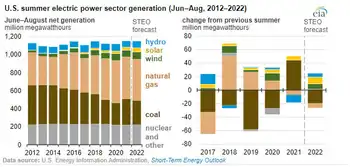Up on the roof, new jobs in solar power
CALIFORNIA - Move over, Joe the Plumber. Spencer the Solar Panel Installer is here.
In this case, itÂ’s Spencer Bockus, who created solar-powered fans and other contraptions for science fairs as a fifth grader in California. Today, at 22, he is on customersÂ’ roofs, measuring where the shade will hit and hooking up photovoltaic arrays, better known as solar panels, to convert the sunÂ’s energy into electricity.
“Sometimes I’m 50 feet up on a steep roof and it’s so hot the tar is melting onto the bottoms of my sneakers,” he said, “but I’m excited because I’m helping the environment.”
Even in the recession, Mr. Bockus has been putting in plenty of overtime for his company, Akeena Solar, which is based in Los Gatos, Calif., and has offices elsewhere in California and in Colorado and the Northeast.
According to the Solar Energy Industries Association, based in Washington, there was a 45 percent increase in installed solar energy systems in 2007 over 2006.
More than 3,400 companies are in the solar energy sector and employ about 25,000 to 35,000 workers, including installers, manufacturers, distributors and project developers and materials suppliers.
“We estimate that will grow to more than 110,000 direct solar jobs by 2016,” said Monique Hanis, a spokeswoman for the organization.
Solar workers install thermal collectors, which convert the sunÂ’s rays into heat used to supply buildings with hot water, for heating and cooling systems and to warm swimming pools. They also install solar panels to convert the sunÂ’s rays into electricity that can power things like appliances and lights. When more electricity is being produced than the customer is using, the excess can be stored in batteries for use at other times. When batteries are full, the surplus electricity can be exported back to the electrical grid if the building is connected to it, offsetting electricity costs from the utility company.
Consumers are turning to solar energy for various reasons, including, of course, the idea that solar power creates no carbon emissions. And many people feel that solar power is important in reducing the dependence of the United States on foreign oil. Some even see a roof festooned with solar panels as an ecological status symbol.
Beyond all of that, government subsidies can reduce the cost of installing solar panels.
Bob Cowen of Morris County, N.J., chose solar panels for his roof for both ecological and economic reasons. To outfit his home with 49 solar panels, he paid $64,700, minus rebates of $42,500 — for an out-of-pocket cost of $22,200.
“The rebates I received from the state of New Jersey made the switch to solar economically feasible,” he said.
In California, Barry A. Cinnamon installed solar panels on his garage in 2001 as a way to save energy costs. Neighbors saw the work and asked him to install panels on their homes, too.
“Some people say their company started in a garage,” Mr. Cinnamon said. “Mine started on top of one.”
Mr. Cinnamon is now the chief executive of Akeena, which has about $40 million in annual sales and employs 220 workers in seven states. Despite the recession, he estimates that his solar panel installation business will increase 40 percent from last year.
Solar panel installers must be able to lift heavy equipment and should feel confident about working in high places, because much of their day is spent on roofs. As for formal training, Mr. Cinnamon said that a high school or trade school education is all that is needed.
“We’re designing easier-to-install panels so there’s less complicated wiring requirements,” he said, “but electrical experience is a plus” because each project requires someone to perform electrical work.
Some applicants with college engineering or business degrees start as solar panel installers, hoping to move into other jobs — like product designer, sales manager or supervisor — within the company or industry.
Gerry Heimbuch, vice president for operations at the Solar Center in Rockaway, N.J., estimates that his company hires a new solar panel installer every month. Many good candidates have come from the sluggish homebuilding industry.
Beside looking for construction and electrical skills, Mr. Heimbuch wants people who can communicate well.
“Our installers need to explain to customers how the new system will work, how to maintain it and how to recognize if there are any issues,” he said.
The Labor Department does not have salary figures for solar panel installers, but in California, Mr. Cinnamon pays workers $15 to $30 an hour, as well as health benefits. His employees can also participate in a stock ownership plan.
In New Jersey, installers hired by the Solar Center start with a three-month training program and earn from $16 to $28 an hour, in addition to health benefits, as they gain skills and take on higher levels of responsibility.
Mr. Heimbuch observes that his solar-installer work force is drawn to construction and to working outside. But he says the environmental impact is important to the workers as well. “They feel like doing this job is doing the right thing for the planet,” he says.
Related News

Electricity subsidies to pulp and paper mills to continue, despite NB Power's rising debt
FREDERICTON - An effort to fix NB Power's struggling finances that is supposed to involve a look at "all options" will not include a review of the policy that requires the utility to subsidize electricity prices for six New Brunswick pulp and paper mills, according to the Department of Natural Resources and Energy Development.
The program is meant "to enable New Brunswick's pulp and paper companies have access to competitive priced electricity," said the department's communications officer Nick Brown in an email Monday
"Keeping our large industries competitive with other Canadian jurisdictions is important," he wrote, knocking down the idea the subsidy…




